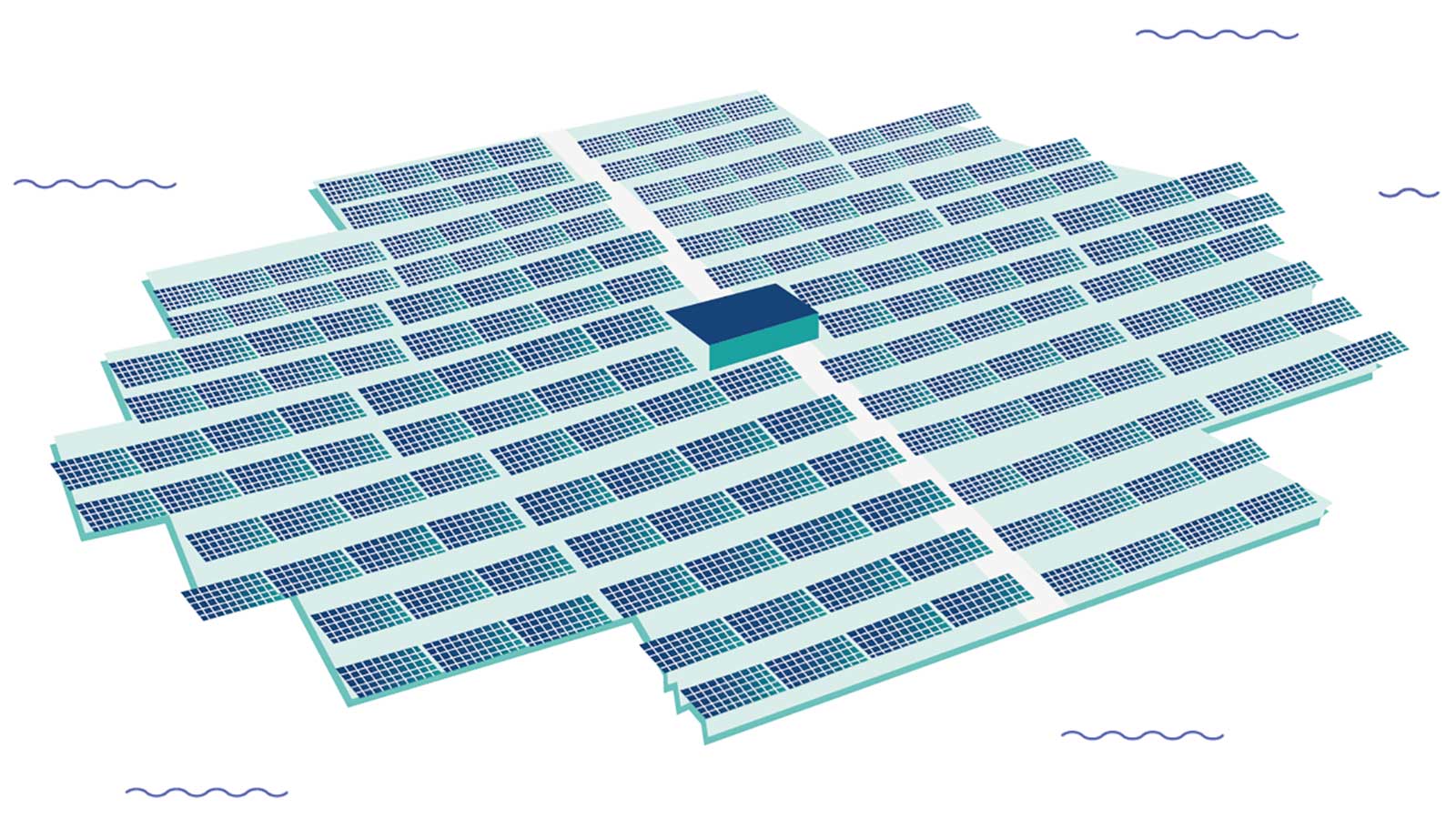Floating photovoltaics is a technology that involves installing photovoltaic solar panels on floating structures, generally on bodies of water such as lakes, ponds, reservoirs or tanks.
You are here:


Zoom: the PV2Float project
RWE, Fraunhofer Institute ISE and the University of Cottbus-Senftenberg (BTU) are actively developing floating photovoltaic technology. As part of the PV2Float research project, the partners are testing several floating photovoltaic systems with different structures under real-life conditions over a three-year period.
Various designs for the support structure and innovative anchoring systems are competing.

In densely populated areas where energy demand is high, floating photovoltaic technology could be a decisive advantage for the development of renewable energies. In Europe, and particularly in Germany, there are many artificial water bodies that meet the technological requirements for floating photovoltaics. According to a study by Fraunhofer ISE, 500 lakes located on former open-cast mining sites alone have the potential for developing several gigawatts of installed capacity.


